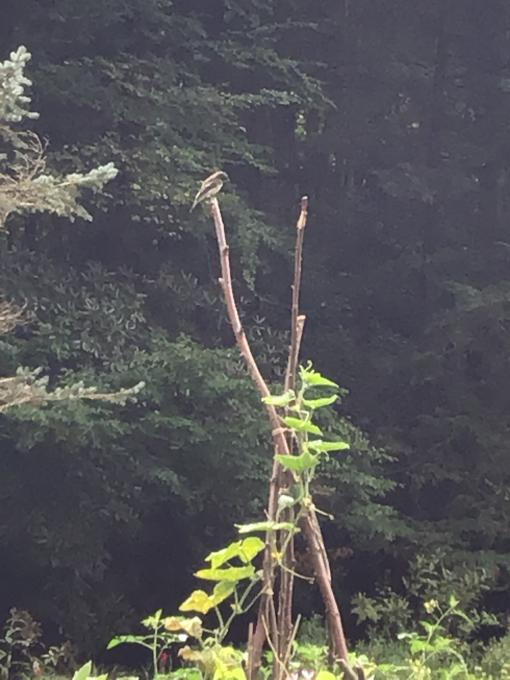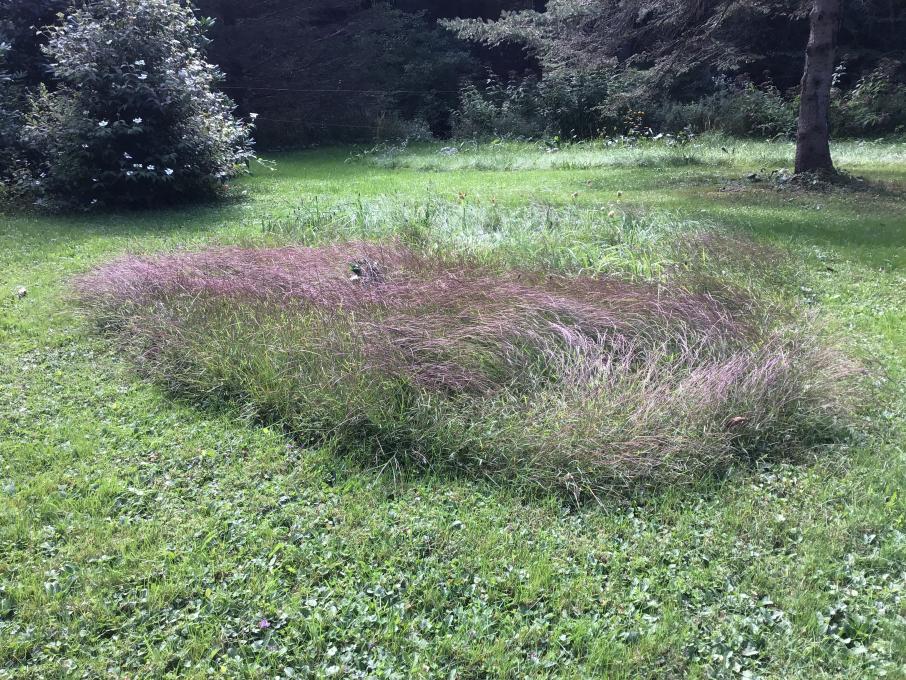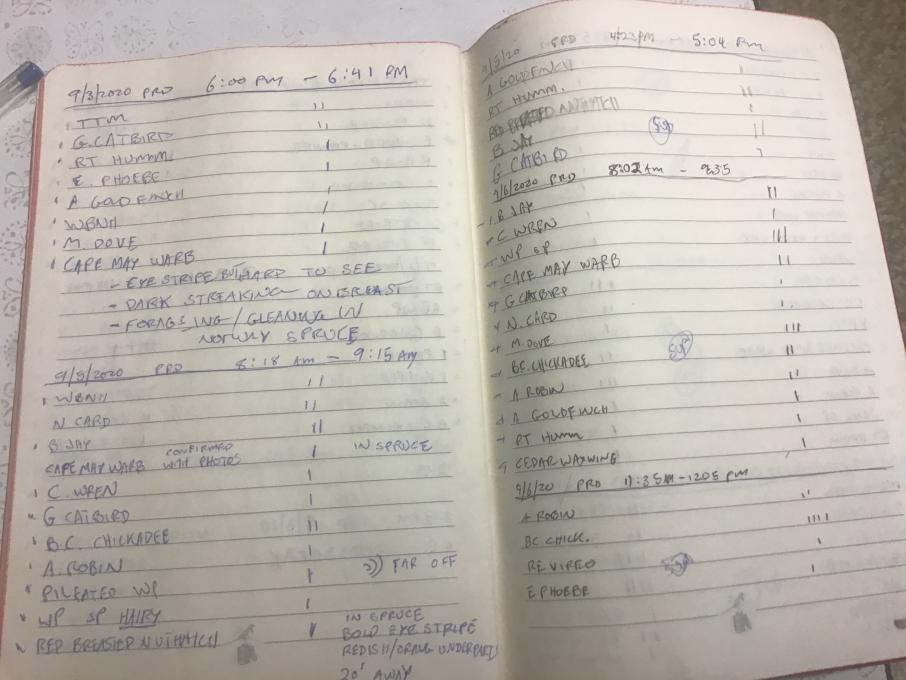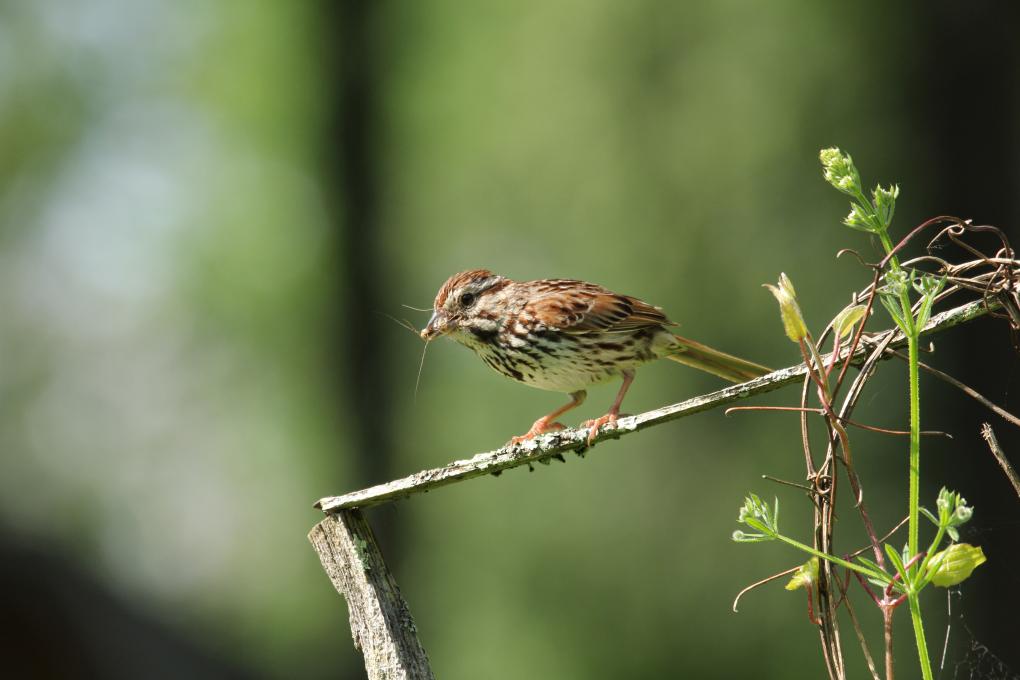Luke
Forum Replies Created
Viewing 18 posts - 1 through 18 (of 18 total)
-
LukeParticipant
- Some Future Goals For Birding
- Continue to hone my birding skills
- Find more birding locations
- Use shade grown coffee
- Continue to plant native and bird friendly plants, trees and shrubs.
- Join a birding organization
in reply to: Activities: Helping Birds in Your World #772327 -
LukeParticipantActivity 3: I can say that populations have changed in my lifetime for some birds. Eagles and bluebirds I never saw when I was young and now l see them often. I believe there are more waterfowl in this area than when I was a young. But for many birds I simply couldn’t say because I have only recently learned to recognize them.in reply to: Activities: Helping Birds in Your World #772312
-
LukeParticipantI have planted a small wildflower meadow. It attracts hummingbirds. Some flowers hummingbirds like are monarda (bee balm), buddleja(butterfly bush), gladioli, runner bean and anise hyssop. It also attracts many insects and the birds that prey on them. When the flowers are finished I leave the dead flower stalks stand to provide seeds for birds. Goldfinches especially love the seeds of coneflower and brown-eyed-Susan. The beanpole in the photo is a favorite perch for hunting phoebes.
 in reply to: Activities: Helping Birds in Your World #772300
in reply to: Activities: Helping Birds in Your World #772300 -
LukeParticipantBy letting a succession of wild plants grow in the periphery of the lawn areas I provide food and cover for pollinators and other insects. This in turn attracts insectivorous birds. The wild plants also provide food directly to birds in the form of seeds and berries. At times the groups of wildflowers can be quite stunning. This patch is a favorite place of foraging wrens. The fall wildflowers in the photo were preceded by wild raspberries.
 in reply to: Activities: Helping Birds in Your World #770682
in reply to: Activities: Helping Birds in Your World #770682 -
LukeParticipant
 One thing I have been doing the last few years is leaving islands of lawn uncut. This encourages a greater variety of plants, insects and even small mammals, and hence birds, than a finely cut lawn. in reply to: Activities: Helping Birds in Your World #770666
One thing I have been doing the last few years is leaving islands of lawn uncut. This encourages a greater variety of plants, insects and even small mammals, and hence birds, than a finely cut lawn. in reply to: Activities: Helping Birds in Your World #770666 -
LukeParticipantActivity 1: I believe that birds have always been a source of enjoyment for me; from feeding birds with my mother as a young boy to seeing my first Bald Eagle to seeing the first flock of Canada geese migrating north in the spring. An awareness of the sounds and behavior of birds around me is like an extension of my own consciousness, and enhances my experience of the natural world. With all the news of climate change, habitat destruction and loss of biodiversity it is easy to become discouraged. Taking this class and using eBird has made me aware of this worldwide community of birders that share my love and interest in the life of our planet. Participating in and seeing the power of citizen science and learning how Cornell Lab of Ornithology is putting all the data they collect to use gives me hope. Thank you Cornell.in reply to: Activities: Helping Birds in Your World #747578
-
LukeParticipant
 My oldest bird notes were written in my field guide ; when and where I saw the bird as seen on the right side of the photo. Later I began making lists of all the birds I saw, the date and where I was birding as seen on in the notebook on the right.
My oldest bird notes were written in my field guide ; when and where I saw the bird as seen on the right side of the photo. Later I began making lists of all the birds I saw, the date and where I was birding as seen on in the notebook on the right. When I began using E-bird I started recording bird counts, start and end times and some notes in addition to the date and location. Most of the places I bird have no cell phone signal so I still record everything in my notebook using a kind of shorthand. I use abbreviations for a lot of the common birds(WBNH- White Breasted Nuthatch, TTM- Tufted Titmouse etc) as well as my usual locations. I also use tick marks for the counts. This makes it easy to add more birds of the same species as I see them. in reply to: Activities: Keeping Track of Your Birdwatching #744478
When I began using E-bird I started recording bird counts, start and end times and some notes in addition to the date and location. Most of the places I bird have no cell phone signal so I still record everything in my notebook using a kind of shorthand. I use abbreviations for a lot of the common birds(WBNH- White Breasted Nuthatch, TTM- Tufted Titmouse etc) as well as my usual locations. I also use tick marks for the counts. This makes it easy to add more birds of the same species as I see them. in reply to: Activities: Keeping Track of Your Birdwatching #744478 -
LukeParticipantActivity 1: I am fortunate that the place where I live has multiple habitats; a stream, a brushy wetland area, a forested area with coniferous and deciduous trees and a scrubby meadow. In the scrubby area I have purposely let wild plants go to seed and I call it my living bird feeder. Right now it is home to a large group of goldfinches that are here all day everyday. There are also three kinds of sparrow. Phoebes and wrens love to hunt insects in the scrubby meadow. In the summer, before the flowers faded it was frequented by many hummingbirds. Right now, in the forested area I am seeing woodpeckers, nuthatches, chickadees, brown creepers, vireos, warblers, and titmouses.in reply to: Activities: Exploring Bird Habitats #741300
-
LukeParticipantActivity 2: Reading the species list for Roger Road, Tucson AZ it is obvious by the number of waterfowl, grebes, shorebirds, gulls, cormorants, herons, ibis and their allies that there is a body of water there: and judging by the presence of vireos, woodpeckers, waxwings etc there must be some trees as well. Indeed the satellite imagery on e-bird maps reveals a green oasis with ponds. An interesting thing I learned is that the Sweetwater Wetlands was constructed in 1996 to retain and reclaim secondary effluent and filter backwash from the Roger Road wastewater treatment plant. It seems that if you build it they will come! the Mt. Lemon species list suggests an upland, forested habitat, again, confirmed by the satellite image.in reply to: Activities: Exploring Bird Habitats #741292
-
LukeParticipantActivity 3: Birding by ear for five minutes. I was able to recognize five bird species; Carolina Wren, American Robin, Black-capped Chickadee, White-breasted Nuthatch and Gray Catbird. I also heard a burbling, warbling kind of a bird sound in a shrubby, weedy area but I couldn’t see the bird.in reply to: Activities: Noticing Behaviors #737097
-
LukeParticipant
- Activity 2: Cornell Lab Feeder Cam
- Black-capped chickadees invariably grab one seed and go.
- Mourning Doves prefer to sit in the seed tray and swallow as many small seeds as they can.
- Northern Cardinal likes to take medium to large seeds, open them at the feeder And discard the husks, and will stay long enough to take a few seeds.
- Red-bellied Woodpecker alights on the vertical tube, takes a mouthful and flies off.
- Common Grackle pushes other birds out and takes the biggest seeds, crushing them in its large beak.
- Red-winged Blackbirds perch on the tube feeder to eat and will stay a few minutes.
in reply to: Activities: Noticing Behaviors #737079 -
LukeParticipantActivity 1: I watched a Cedar Waxwing for about ten minutes. It was early morning and the sun’s rays were just kissing the treetops. The waxwing sat in the highest tips of a dead tree in the bright sunlight and was preening and stretching . I imagine the bird was warming up for it’s busy day.in reply to: Activities: Noticing Behaviors #734986
-
LukeParticipantemail just vanishes when I hit submit ?in reply to: Activities: Local Bird Exploration #729681
-
LukeParticipantYes, Gray Catbirds. Nice photos.in reply to: Activities: Local Bird Exploration #728551
-
LukeParticipantActivity 1: Two birds I have learned to tell apart by shape are the Bald Eagle and the Turkey Vulture. When soaring Turkey Vultures hold their wings in a distinctive V shape and Bald Eagles hold their wings absolutely flat out. I can tell the difference even at a great distance or when the bird is silhouetted in the sky. Activity 2: Eastern Phoebes are gray/brown above white below with a darker head. Black-capped Chickadees have a black cap and throat bib and white cheeks. White-breasted Nuthatches have a white face with a black cap and nape. All three come up as choices for the Merlin search” sparrow sized, black, gray and white, in trees or bushes. Activity 3: Eastern Phoebes take short flights from a perch to grab insects from the air. Chipping sparrows forage on the ground for seeds and insects. Baltimore Orioles hops branch to branch combing the tree canopies for insects. Activity 4: My favorite bird for this lesson is the Carolina Wren
- Size and Shape: sparrow sized, slightly curved bill, tail as long as body
- Color Pattern and Markings: brown above, white below, bold white eyebrow stripe and whitish throat
- Behavior: forages for insects in dense vegetation, wood or brush piles, and tree cavities
- Habitat and Range: year-round resident of the eastern USA from New York south to Florida west to Kansas Northeast Mexico and the Yucatán peninsula
- Sounds: very loud “ teakettle-teakettle-teakettle “
in reply to: Activities: Bird ID Practice #728512 -
LukeParticipantActivity 2: For activity 2 I chose the Ruby-Throated Hummingbird, the House Wren, and the Red-eyed Vireo. There are many hummingbirds here now for the flowers, and we have a Wren family in a nest box but the coolest thing I saw was two vireos feeding a chick that had left the nest. I had to compare bird calls to figure out what kind of vireos they were. Activity 3: I chose the Song Sparrow. There is one I see almost every day. It perches close to me whenever I’m in the garden. I look forward to being able to identify more kinds of sparrows soon. This is another photo from last year.
 in reply to: Activities: Exploring Birds #727786
in reply to: Activities: Exploring Birds #727786 -
LukeParticipantI noticed this with the Blue Jays here in Pennsylvania. We have always had noisy, raucous groups of them until last year when a pair nested here. They were completely quiet all summer .in reply to: Activities: Exploring Birds #727771
-
LukeParticipantActivity 1: I chose the Brown Creeper from the family of tree creepers. It’s shown in western North America on the wall but we have them here in Pennsylvania as well. I was surprised to learn how large the Brown Creepers range is and that it is a year-round resident here. I only first saw one last year and was able to get a photo. I think they are cool because they are masters of camouflage.
 in reply to: Activities: Exploring Birds #727581
in reply to: Activities: Exploring Birds #727581
Viewing 18 posts - 1 through 18 (of 18 total)


 One thing I have been doing the last few years is leaving islands of lawn uncut. This encourages a greater variety of plants, insects and even small mammals, and hence birds, than a finely cut lawn.
One thing I have been doing the last few years is leaving islands of lawn uncut. This encourages a greater variety of plants, insects and even small mammals, and hence birds, than a finely cut lawn.  My oldest bird notes were written in my field guide ; when and where I saw the bird as seen on the right side of the photo. Later I began making lists of all the birds I saw, the date and where I was birding as seen on in the notebook on the right.
My oldest bird notes were written in my field guide ; when and where I saw the bird as seen on the right side of the photo. Later I began making lists of all the birds I saw, the date and where I was birding as seen on in the notebook on the right. When I began using E-bird I started recording bird counts, start and end times and some notes in addition to the date and location. Most of the places I bird have no cell phone signal so I still record everything in my notebook using a kind of shorthand. I use abbreviations for a lot of the common birds(WBNH- White Breasted Nuthatch, TTM- Tufted Titmouse etc) as well as my usual locations. I also use tick marks for the counts. This makes it easy to add more birds of the same species as I see them.
When I began using E-bird I started recording bird counts, start and end times and some notes in addition to the date and location. Most of the places I bird have no cell phone signal so I still record everything in my notebook using a kind of shorthand. I use abbreviations for a lot of the common birds(WBNH- White Breasted Nuthatch, TTM- Tufted Titmouse etc) as well as my usual locations. I also use tick marks for the counts. This makes it easy to add more birds of the same species as I see them. 
